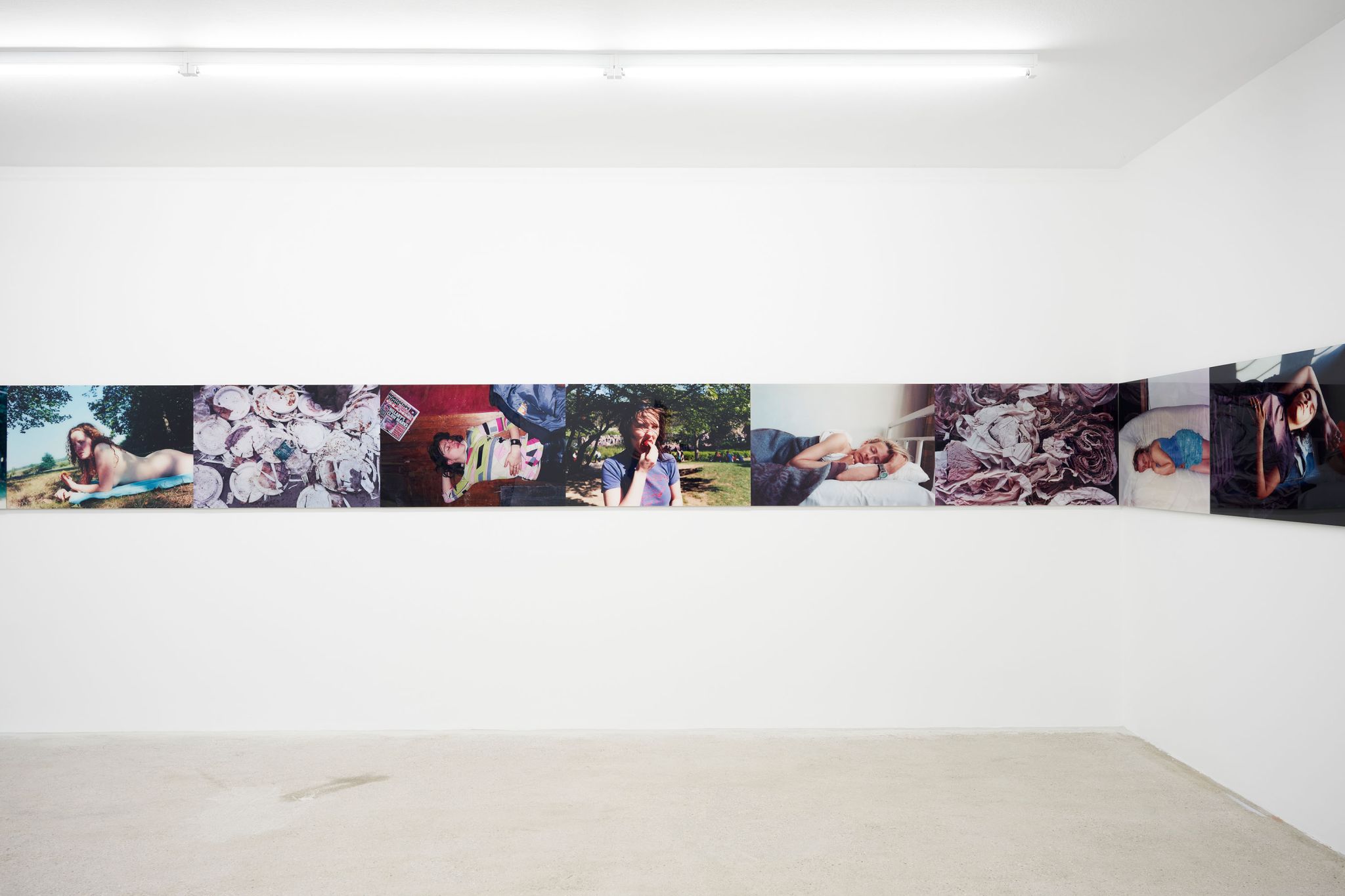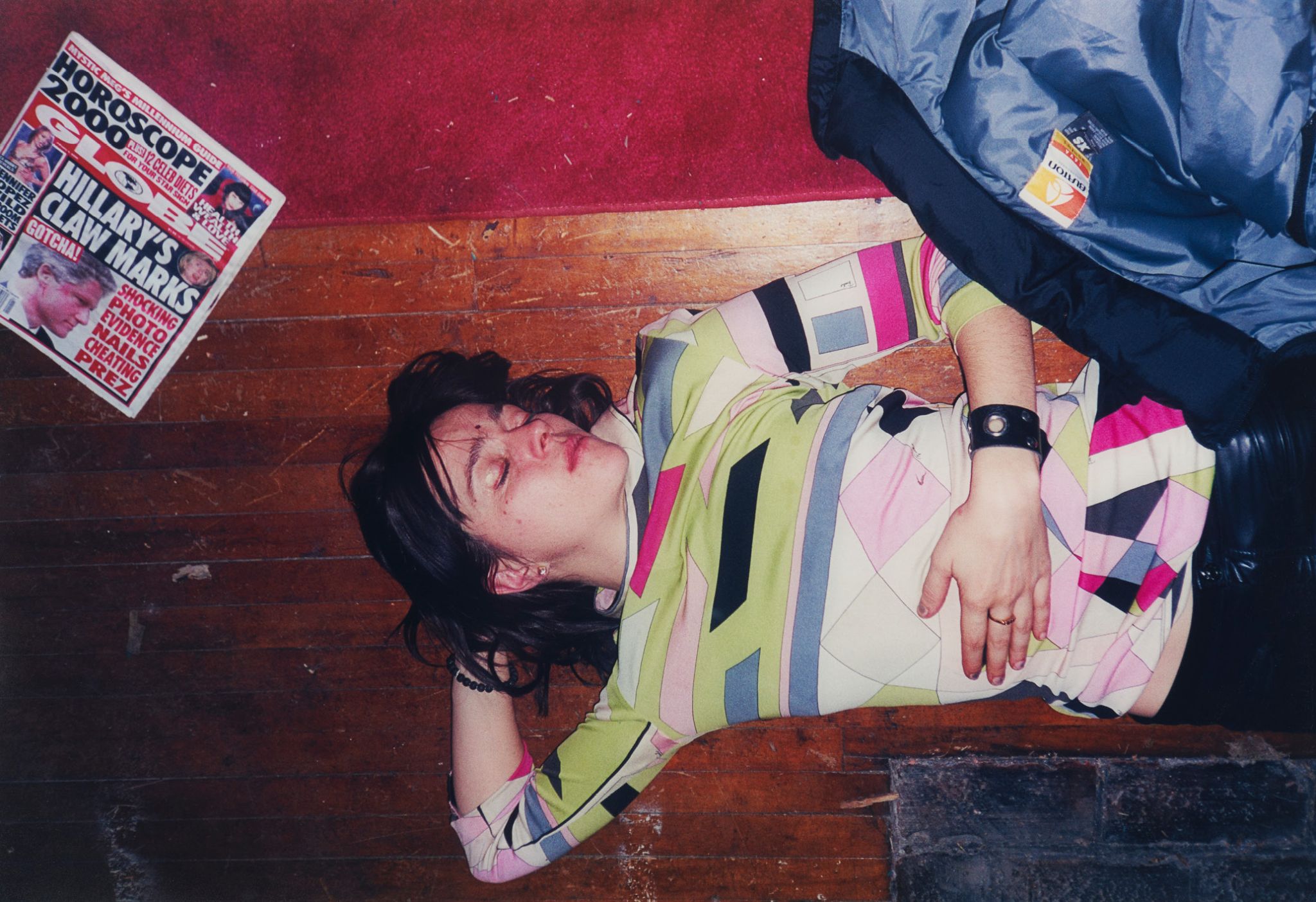-
These photographs – believed lost but discovered in a dusty crate locked away for two decades from the damaging effects of light – enter our current image-world like a breath of fresh air. They originate at the tail end of human analog time ca. 1997-2000 and exhibited 2001/2005, shot on 35mm, three series printed by the artist in the darkroom at an almost impossibly large size. Time has changed these photographs as we gaze upon them again.
read more -
Diese verloren geglaubten Fotografien wurden in einer verschollenen Transportkiste, die sie zwei Jahrzehnte lang vor der schädlichen Wirkung des Lichts bewahrt hat, entdeckt und dringen in unsere gegenwärtige Welt der Bilder wie ein Hauch frischer Luft. Sie stammen aus der Zeit um 1997–2000, als das Analoge endete, und wurden 2001/2005 ausgestellt. Es sind auf 35mm aufgenommene Bilder in drei Serien, die von der Künstlerin in der Dunkelkammer im Großformat entwickelt wurden. Die Zeit hat diese Fotografien, jetzt, wo wir sie erneut betrachten, verändert.
read more
Wednesday – Friday 12 – 6 pm
Saturday 12 – 4 pm and by appointment
A.L. Steiner
Prologue: Disaster Paradise
02.12.22 – 21.01.23
-

A.L. Steiner, Eat, Sleep, Disposable (retrieved) (detail), 16 photographic prints behind acrylic glass, Installation: 60 × 1440 cm, Installation view, Prologue: Disaster Paradise -

A.L. Steiner, Eat, Sleep, Disposable (retrieved) (detail), 16 photographic prints behind acrylic glass, Installation: 60 × 1440 cm, Installation view, Prologue: Disaster Paradise -

A.L. Steiner, Eat, Sleep, Disposable (retrieved) (detail), 16 photographic prints behind acrylic glass, Installation: 60 × 1440 cm, Installation view, Prologue: Disaster Paradise -

A.L. Steiner, Eat, Sleep, Disposable (retrieved) (detail), 16 photographic prints behind acrylic glass, Installation: 60 × 1440 cm, Installation view, Prologue: Disaster Paradise -

A.L. Steiner, Eat, Sleep, Disposable (retrieved) (detail), 16 photographic prints behind acrylic glass, Installation: 60 × 1440 cm, Installation view, Prologue: Disaster Paradise -

A.L. Steiner, Eat, Sleep, Disposable (retrieved) (detail), 16 photographic prints behind acrylic glass, Installation: 60 × 1440 cm, Installation view, Prologue: Disaster Paradise -

A.L. Steiner, Eat, Sleep, Disposable (retrieved) (detail), 16 photographic prints behind acrylic glass, Installation: 60 × 1440 cm, Installation view, Prologue: Disaster Paradise -

A.L. Steiner, Eat, Sleep, Disposable (retrieved) (detail), 16 photographic prints behind acrylic glass, Installation: 60 × 1440 cm, Installation view, Prologue: Disaster Paradise -

A.L. Steiner, Eat, Sleep, Disposable (retrieved) (detail), 16 photographic prints behind acrylic glass, Installation: 60 × 1440 cm, Installation view, Prologue: Disaster Paradise -

A.L. Steiner, Eat, Sleep, Disposable (retrieved) (detail), 16 photographic prints behind acrylic glass, Installation: 60 × 1440 cm, Installation view, Prologue: Disaster Paradise -

A.L. Steiner, Eat, Sleep, Disposable (retrieved) (detail), 16 photographic prints behind acrylic glass, Installation: 60 × 1440 cm, Installation view, Prologue: Disaster Paradise -

A.L. Steiner, Eat, Sleep, Disposable (retrieved) (detail), 16 photographic prints behind acrylic glass, Installation: 60 × 1440 cm, Installation view, Prologue: Disaster Paradise -

A.L. Steiner, Eat, Sleep, Disposable (retrieved), 16 photographic prints behind acrylic glass, Installation: 60 × 1440 cm, Installation view, Prologue: Disaster Paradise 
